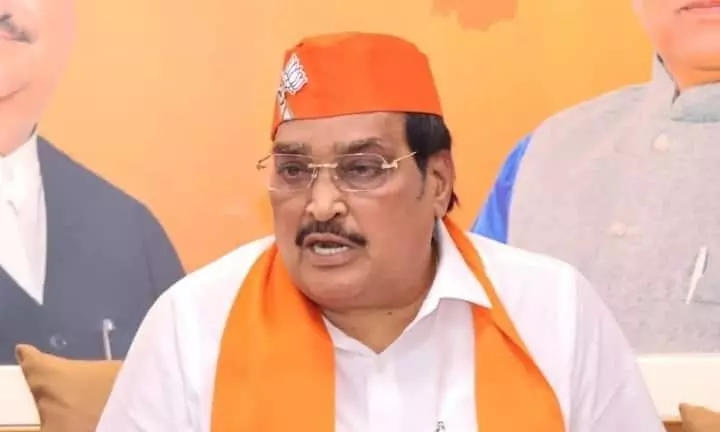In the bustling heart of Maharashtra, a renewed wave of regional pride has surged, spearheaded by the Thackeray cousins—Uddhav and Raj—under the banner of Marathi Asmita, or Marathi identity. This movement, rooted in the historical struggle for Marathi linguistic and cultural supremacy, has recently taken a confrontational turn, with the Gujarati community in Mumbai finding itself in the crosshairs. Yet, a striking irony emerges when one looks to Gujarat, where a Marathi-born leader, C.R. Patil, presides over the state’s Bharatiya Janata Party (BJP) without a whisper of ethnic discord. This paradox raises a critical question: is the targeting of Gujaratis in Maharashtra justified, or is it a politically charged misstep that undermines the very unity it claims to champion?

The Marathi Asmita movement, revitalized in 2025, draws its energy from a decades-old narrative of protecting Marathi culture and language against perceived external threats. The Thackeray brothers, leading the Shiv Sena (UBT) and Maharashtra Navnirman Sena (MNS) respectively, have found common ground after years of estrangement, rallying around the cause of Marathi pride. Their recent joint “victory rally” in Mumbai, following the rollback of a controversial three-language policy that mandated Hindi in primary schools, was framed as a triumph for Marathi identity. Raj Thackeray’s fiery rhetoric at the rally, where he warned against attempts to “merge Mumbai with Gujarat” and vowed to protect Marathi language and culture, struck a chord with supporters but also inflamed tensions with the Gujarati community.
Patil’s Grand Gujarat Entry was initiated with Haldi Kumkum event predominantly a marathi custom.
When C.R. Patil took the reins as Gujarat BJP president in July 2020, he didn’t just step into the role—he was catapulted into the spotlight via a mega Haldi Kumkum program, a Marathi cultural extravaganza masterminded by Vadodara’s powerhouse, Rajesh Ayare. The Haldi Kumkum bash didn’t just introduce Patil—it declared his intent to lead with inclusivity and unstoppable energy, setting Gujarat ablaze with his bold vision.
Meanwhile, across the state border in Gujarat, a different story unfolds. Chandrakant Raghunath Patil, born in Maharashtra’s Jalgaon district to Marathi parents, stands as a towering figure in Gujarat’s political landscape. As the president of Gujarat’s BJP since 2020 and a four-time MP from Navsari, Patil has been embraced by Gujaratis as one of their own. His fluency in Gujarati, alongside Marathi, Hindi, and English, and his contributions to Surat’s textile and diamond industries, have earned him widespread respect. Patil’s leadership, marked by initiatives like smokeless villages and COVID-19 care centers, transcends ethnic divides, embodying a model of integration that contrasts sharply with the tensions in Maharashtra. When Delhi Chief Minister Arvind Kejriwal taunted Patil’s Marathi origins, suggesting they undermined Gujarati pride, Patil dismissed the jab, proudly declaring, “I have also become Gujarati,” a sentiment echoed by Gujaratis who see no conflict in his dual identity.
Mumbai, a melting pot of cultures, has long been a battleground for identity politics. Gujaratis, comprising roughly 17% of the city’s population, have historically been integral to its economic fabric, with luminaries like Dhirubhai Ambani and Gautam Adani rising from Mumbai’s vibrant business ecosystem. Yet, incidents like the alleged barring of Marathi-speaking Shiv Sena workers from campaigning in Gujarati-dominated housing societies in Ghatkopar and the reported denial of office space to a Marathi woman in Mulund have fueled accusations of discrimination. These events, amplified by viral videos and social media outrage, have been seized upon by the Thackerays to paint Gujaratis as antagonistic to Marathi interests.
The rhetoric escalated with Raj Thackeray’s sharp retort to BJP MP Nishikant Dubey, who provocatively claimed that Marathi speakers would be “beaten mercilessly” for targeting Hindi speakers. Raj’s counter-threat to “drown” Dubey in Mumbai’s sea underscored the movement’s aggressive posturing, which critics argue is less about cultural preservation and more about political survival ahead of civic polls. The Thackerays’ narrative often casts Gujarati businessmen as conspiring to wrest Mumbai from Maharashtra, a charge that resonates with some Marathi voters but risks alienating a community that has coexisted with Marathis for generations.
This acceptance in Gujarat exposes the fault lines in the Thackerays’ campaign. If Gujaratis can embrace a Marathi leader without reservation, why does the Marathi Asmita movement single out Gujaratis in Mumbai as adversaries? The answer lies partly in history and partly in politics. The Marathi-Gujarati divide traces back to the Samyukta Maharashtra movement of the 1950s, which fought for Mumbai’s inclusion in a Marathi-speaking state against a bilingual Bombay state that included Gujarat.
The movement’s success in 1960 cemented Mumbai as Maharashtra’s capital but left lingering distrust between the communities. Bal Thackeray, the Shiv Sena founder, capitalized on this sentiment, targeting non-Marathi groups, including Gujaratis, to rally the “Marathi Manoos.” Today, his son Uddhav and nephew Raj are reviving this playbook, but critics argue it’s a dated strategy in a globalized Mumbai where economic interdependence outweighs ethnic rivalries.
The movement’s focus on Gujaratis also risks alienating allies within Maharashtra’s diverse political
landscape. The BJP, which has long courted Gujarati voters, finds itself in a delicate position as its ally, the Shinde-led Shiv Sena, and even Ajit Pawar’s NCP faction, have distanced themselves from the Hindi imposition controversy to avoid antagonizing Marathi voters. Meanwhile, posts on X reflect growing skepticism, with users like @erbmjha accusing the Thackerays of using Marathi Asmita as a pretext for political survival rather than genuine cultural advocacy.
The irony is stark: while the Thackerays rally for Marathi unity, their rhetoric risks fracturing Mumbai’s cosmopolitan spirit. Gujarat’s embrace of C.R. Patil proves that cultural pride need not come at the expense of inclusivity. As Mumbai navigates this turbulent chapter, the Marathi Asmita movement must decide whether it will build bridges or burn them. In a city that thrives on its diversity, the latter could prove a costly mistake, both for the Thackerays and for Maharashtra’s broader social fabric.

